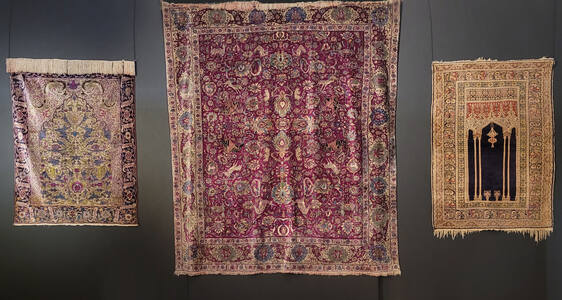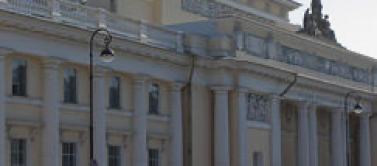Silk in Iran

Iran was one of the first centers of silk production. Here, silkworm breeding was facilitated by the climate, which was especially mild in the coastal provinces. The local sericulture traditions were enriched via the transit silk trade, both on land and at sea. The Iranian Shah was the largest owner of mulberry lands and silk-weaving production; he also controlled silk exports, and high duties on the silk trade replenished the state treasury.
Workshops functioned at the Shah’s court, providing it with expensive fabrics: brocade, velvet and satin intended for royals’ and courtiers’ clothing. Those workshops also produced richly decorated, heavy interior fabrics designed to demonstrate the luxury of the Shah’s palaces. Genius weavers processed huge canvases from the inside out, checking the pattern quality with the help of mirrors.
The pinnacle of Iranian silk weaving was the production of silk pile carpets. The density of such carpets reached 1,200–1,500 knots per dm2; a long pile (0.3–0.5 cm) made it velvet-soft. The carpets’ ornament was characterized by an intricate yet harmonious composition, and its patterns were especially exquisite.
Unique silk carpets were an important part of the embassy’s gifts and Iran’s elite export trade. European monarchs, who highly appreciated the silk glow and the subtlety of the work of Iranian carpet makers, purchased their products both for their ‘oriental cabinets’ and for the empresses’ boudoirs.
Pile carpets
Late 19th – early 20th century. Iran. Iranians
Pile carpet
2nd half of the 19th century. Iran. Iranians
The carpet was a part of Empress Maria Feodorovna’s private chamber decor as indicated by the two-sided pewter stamp. On one of the sides, there is a circle with a monogram in the center representing the initials ‘M[aria]’ and ‘F[eodorovna]’ under the imperial crown and the words ‘Her Imp[erial] Maj[esty] Emp[ress]’ around it. On the other side, there is a circle with the ‘гардеробъ’ (‘cloakroom’) inscription arched over two six-petal rosette.



